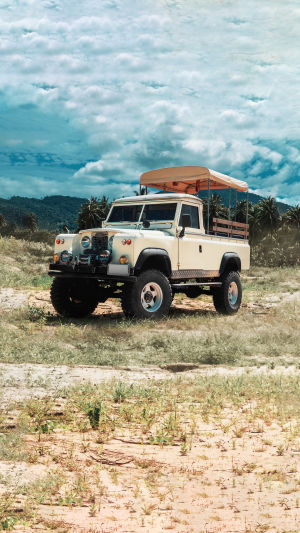Do you own an off-road vehicle? Can you drive it sensibly? Are you truly prepared for off-roading?
Having a reliable off-road vehicle and proficient off-road driving skills are essential, especially in diverse terrains like lowlands, deserts, plains, glaciers, wetlands, marshes, and mudflats.
Navigating Rugged and Bumpy Ground:
When driving in challenging terrain such as Gobi Beach, rocky piles, dry riverbeds, and gravel roads in mountainous areas, understanding your vehicle's minimum ground clearance is crucial.
To avoid chassis damage, maintain a slow speed over rocky surfaces. Utilize the 4L gearbox's first gear and, when facing obstacles, consider using the wheels strategically to maneuver around stones.
This cautious approach is key to preventing potential damage and ensuring a safe off-road experience.
Conquering Steep Slopes:
Whether tackling mountains, dams, or railroad berms, it's vital to be aware of your vehicle's climbing limits. Engage 4L before ascending and progressing in first gear, transitioning to second gear while maintaining a steady throttle to prevent wheel slippage.
Uphill driving requires facing the slope directly to avoid potential side rolls. If power falters mid-climb, carefully reverse and steer accurately. When descending, control the speed with a low gear and avoid excessive braking.
This methodical approach minimizes the risk of accidents and enhances overall safety during off-road adventures.
Navigating Mud:
Traversing wetlands, swamps, rice paddies, and muddy roads demands skill. Use 4H with second or third gear for smooth mud passages, but beware of deep swamps, where external assistance may be necessary if your vehicle becomes stuck.
Adjust your approach based on mud conditions, whether it's a hard bottom or soft mud, using the appropriate gear and throttle control.
By adapting to different mud scenarios, you can ensure a seamless off-road experience and mitigate the challenges posed by muddy terrain.
Handling Sand:
Driving on sand, such as in deserts, flowing dunes, beaches, or construction site sand piles, requires specific techniques. In flat sand, employ the gearbox in second or third gear. Be cautious of uneven weight distribution, as it can lead to idling in the sand.
If stuck, consider assistance from a winch or another vehicle. In deeper sand, clear the wheels and use hard objects beneath them to gain traction. This strategic approach to sand driving enhances your ability to overcome obstacles and navigate sandy terrain effectively.
Tackling Ice and Snow Roads:
Winter roads, high-cold mountainous areas, and year-round snow areas present unique challenges. Use non-slip chains in snowy conditions and adjust speed accordingly. In deep snow, engage L4 for better traction.
On icy roads, maintain a slow speed and avoid steep slopes. This cautious and adaptive approach to winter driving ensures a safer journey through challenging icy and snowy terrains.
Cross-country driving requires a blend of technology, wisdom, and courage. Regular practice, experience, and a knack for learning from each adventure are crucial for improving your off-road driving skills.
By adopting a thoughtful and cautious approach in various terrains, you can enhance your off-road experience and ensure a safer and more enjoyable journey.





